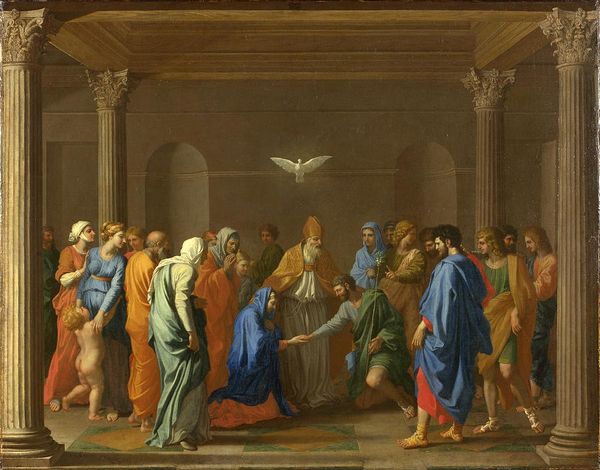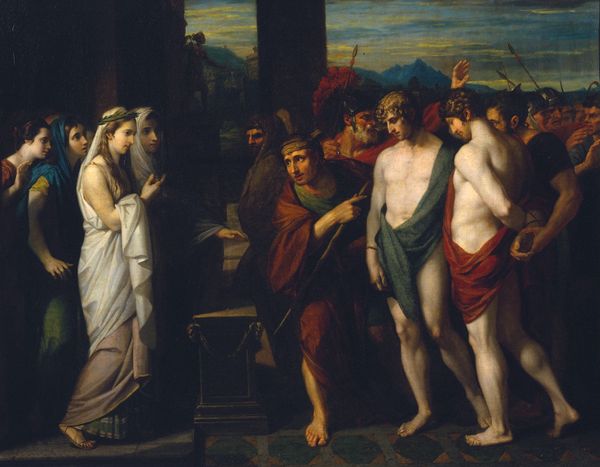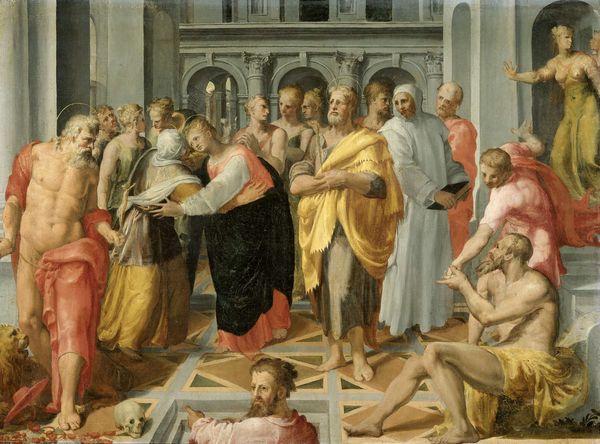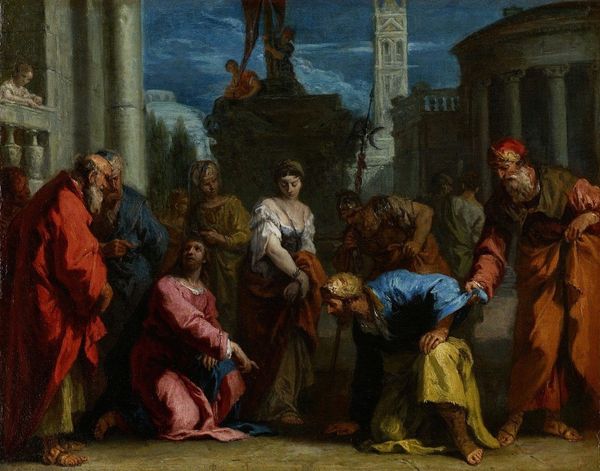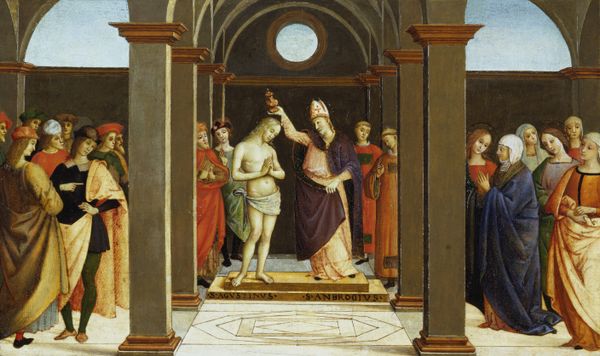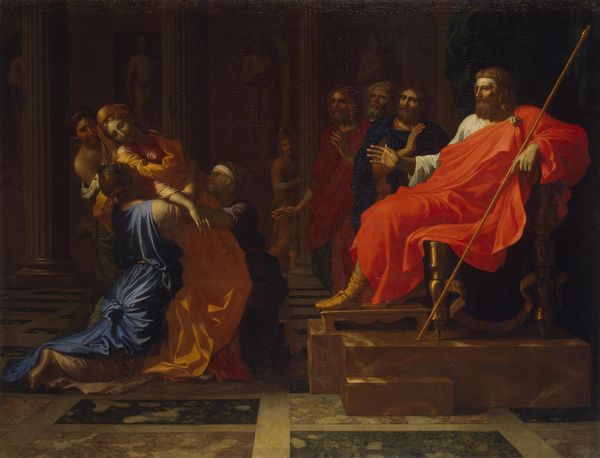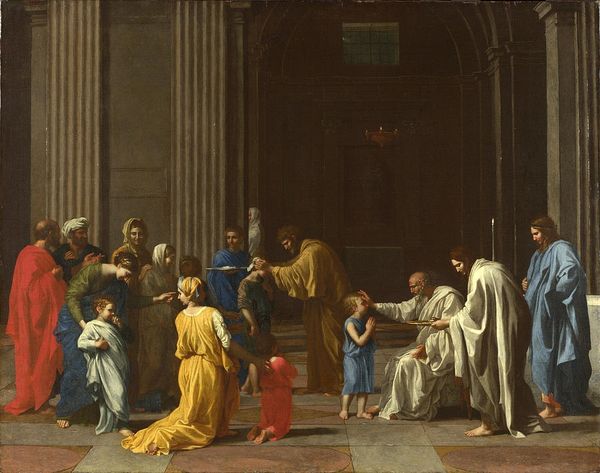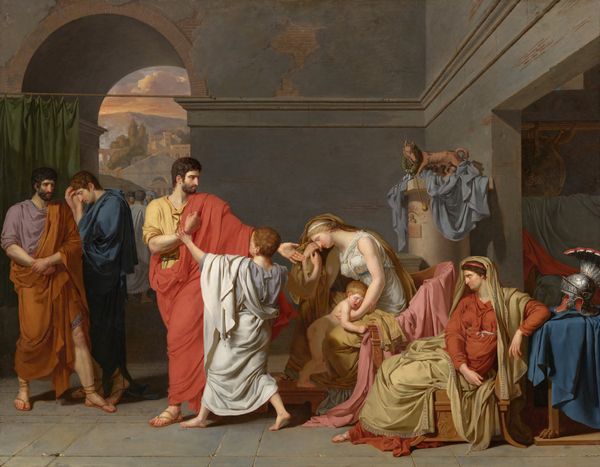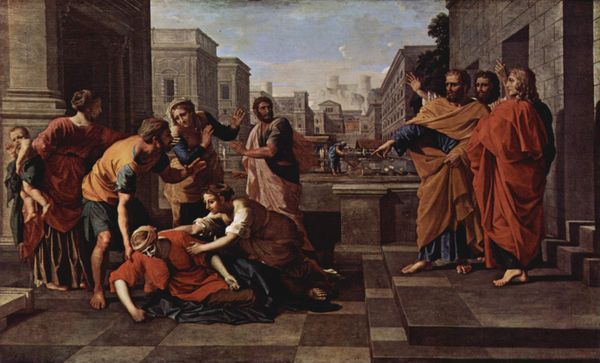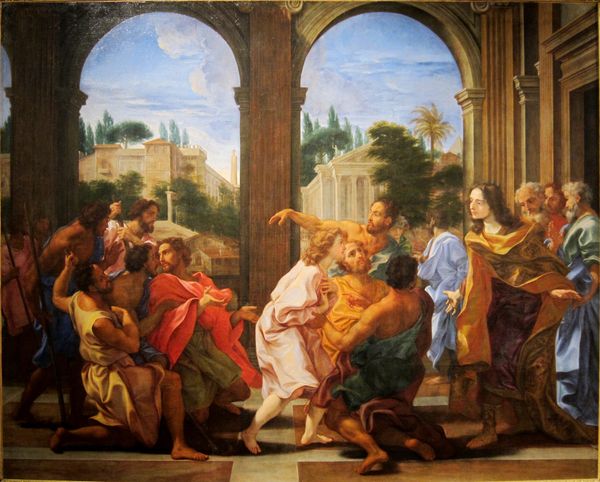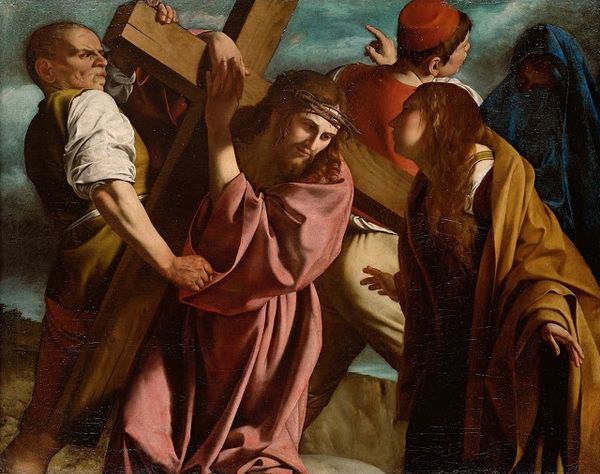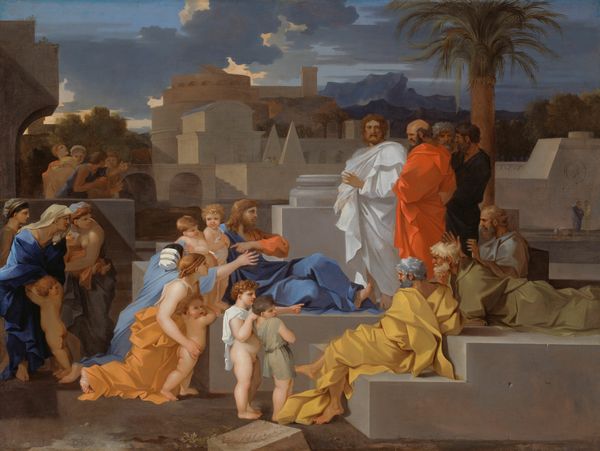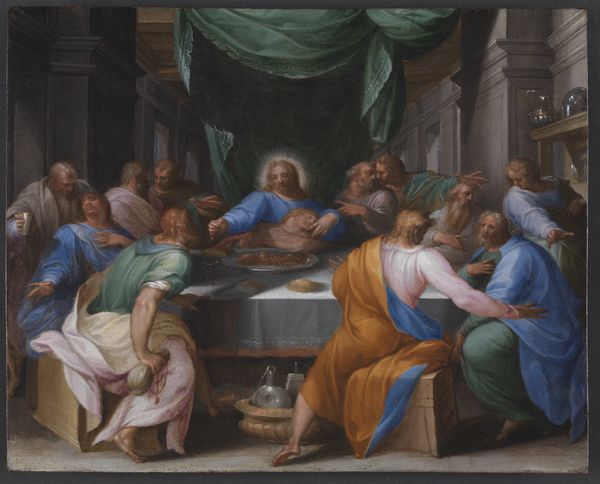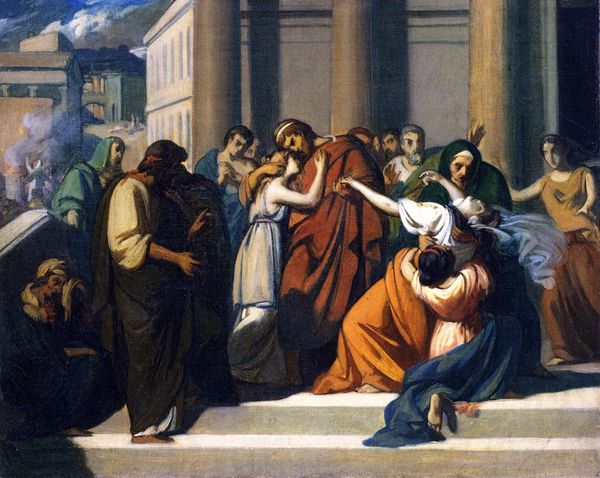
painting, oil-paint
#
allegory
#
baroque
#
painting
#
oil-paint
#
mannerism
#
figuration
#
oil painting
#
history-painting
Dimensions: height 38 cm, width 52 cm
Copyright: Rijks Museum: Open Domain
Otto van Veen painted “The Conference of the Gauls at Reims” in the late 16th or early 17th century. Van Veen’s painting illustrates a pivotal moment in Gaulish history, reflecting his era's fascination with classical antiquity. Note the figures clad in idealized, classical garb, indicative of the period’s artistic conventions and the desire to connect with the glory of past empires. Consider the politics of representation at play here: who is included, how are they portrayed, and what does this tell us about the artist’s intentions and the cultural values of his time? The male-dominated scene invites us to question whose voices are privileged and whose are marginalized in historical narratives. The artwork's setting within a conference alludes to themes of diplomacy, negotiation, and the forging of alliances. It is interesting to reflect on how historical narratives are constructed, whose perspectives they represent, and how they shape our understanding of identity and power.
Comments
rijksmuseum about 2 years ago
⋮
In 1613, the Dutch parliament (States General) commissioned Otto van Veen to paint twelve paintings depicting the revolt of the Batavians against the Romans in AD 69 and 70. These were displayed in Binnenhof, the central government building in The Hague. In the early years of the Dutch Republic, many compared their own revolt against Spain to the Batavian uprising.
Join the conversation
Join millions of artists and users on Artera today and experience the ultimate creative platform.
